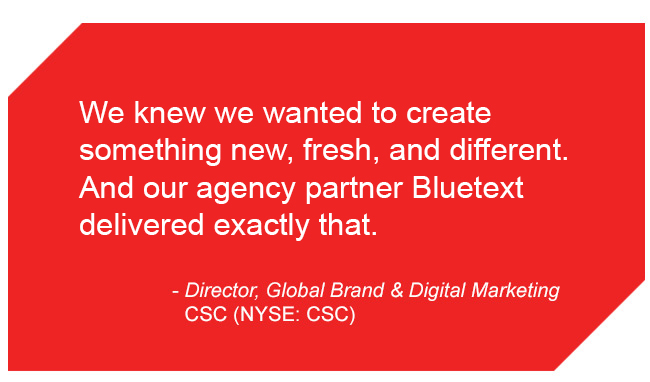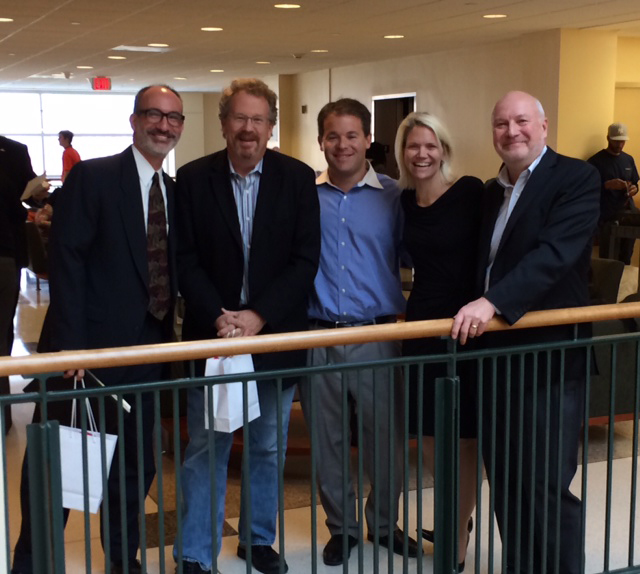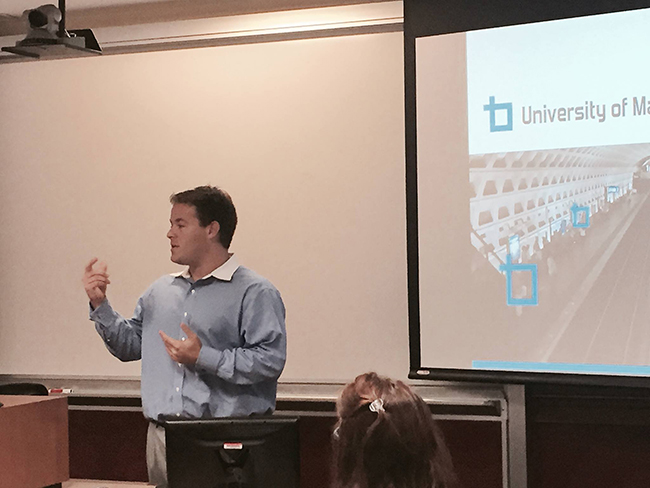We love to tout the great work we are doing for the major, market-leading brands like Adobe, CA, CSC, Cisco, Google, Intel and McAfee. All one-time challenger brands in their own right, each came to us because they recognize that our more progressive, digital-first approach to brand engagement allows them to deliver the kind of real-time customer experience that so perfectly meets their goals. These companies need to continue to feel very now…hot, innovative and culturally relevant…and stay one step ahead of the new generation of brands challenging their dominance.
This becomes increasingly more difficult – and as a marketer…equally more exciting – as these original mavericks of technology begin to slow with age and become mired in bureaucracy. It’s the challenge to make a difference within such a tight box that fuels our creative firepower to think outside of it and deliver game-changing results for even the most established brands.
It is, however, for quite the same reason that we love to keep our thinking fresh with a healthy client mix – and working with less established, but well managed startups and challenger brands is a key part of that. Their nimble and enterprising character allow our teams the freedom to create and rally around new ideas and deliver the forward thinking digital and creative strategies to help our clients in this category disrupt and realign market perceptions and redefine the boundaries of the category to challenge, deposition and ultimately displace the number one brand in the market. Here are some recent examples of that work:
Canvas
Canvas has rapidly established itself as one of the fastest growing mobile business application services in the world, with thousands of organizations leveraging Canvas’ cloud-based, “as-a-Service” mobile app platform to replace cumbersome paper forms with highly customizable mobile business apps that work on nearly every smartphone and tablet on the market.
When Canvas first turned to the Bluetext team as its global PR agency of record, Bluetext put in place a public relations program designed to support high growth and market leadership, penetrate target verticals and also support expansion into global markets. Bluetext has supported Canvas the past two years through triple digit revenue growth and the opening of international offices in Sydney and London.
The media relations and thought leadership program developed and executed on behalf of Canvas represents how Bluetext successfully elevated Canvas’ brand and services to business and national press. It accomplished this by honing in on this through multiple strategies, including a unique use case for Canvas technology that would hold appeal to a new set of media. In this case, it was the use of Canvas by an African reserve to combat Rhino poaching. Bluetext focused on messages that would still communicate the technology’s value proposition, and placed Canvas-centric articles with Associated Press, Bloomberg Business Week and The Washington Post. This coverage snowballed into dozens of additional global articles and led directly to new customer acquisition.
Gamescape, the brainchild of two die-hard fantasy sports enthusiasts and marketing entrepreneurs, came to Bluetext with a clear mission: create a gamification experience leveraging daily fantasy sports that drives customer loyalty as a brandable solution for bars, restaurants and other venues nationwide.
Bluetext took this concept and, with the Gamescape team, and did every aspect of their branding, marketing, and platform design and development. Gamescape wanted to create a sophisticated application that included a robust sports fantasy system, a messaging system for patrons to interact together, and profile creation with location-based geo-fencing. On top of all of that the new platform had to be visually striking, extremely intuitive and easy-to-use.
From loyalty-building rewards points to new ways to communicate with your customers, the mobile-first digital platform Bluetext developed for Gamescape offers an impressive suite of features focused on increasing the opportunities to interact and connect with your guests while offering them new entertainment options. Gamescape’s geofencing technology requires players to be in your establishment in order to join a game.
HelloWallet
HelloWallet, a financial services provider for large enterprises backed by AOL founder Steve Case, wanted to make a big splash in the national media with the value it brings to the market. Bluetext helped package original research on 401k challenges, and crafted a media rollout strategy that leveraged the research and pitted competing publications for the best coverage. The result– a front-page article in The Washington Post followed by major network coverage and more than 50 separate articles in national and business publications including Forbes, the Wall Street Journal and the New York Times.
Bluetext is an equal opportunity branding, digital marketing and strategic communications agency – from leaders of global industry to the upstarts that may one day threaten them.
On its 10th anniversary of connecting communicators, Capitol Communicator determined that to continue to grow and be a vibrant part of the Washington, D.C., marketing and communications community, its next 10 years would be built on a new digital strategy and complementing user experience strategy. As a central hub for news, events and information for communicators in the mid-Atlantic, Capitol Communicator wanted a more modern platform.
Capitol Communicator selected Bluetext to partner with for this complete digital overhaul. Bluetext has delivered an enterprise-level WordPress implementation with comprehensive CMS publishing technologies that are integrated to allow Capitol Communicator to get best-in-class SEO, content management and smart, modern design.
Said Paul Duning, publisher of Capitol Communicator, “After a very exhaustive review, Bluetext had the energy, creativity, digital savviness, and firepower to be our new digital partner, and they really delivered. Our community has spoken, and they all love the new site which is helping us further validate that we are taking the brand in the right direction with a new digital platform as the centerpiece.”
Capitol Communicator is dedicated to bringing together the vast spectrum of communications professionals who influence and educate the Mid-Atlantic region and the world by providing news; trends; education; and opportunities for networking, career enhancement, business exchange and showcasing great work, Capitol Communicator serves as a resource to the region’s communications community. Capitol Communicator focuses on building a community that encompasses professions that include public relations, advertising, marketing, media, creative, video, photography, printing, digital and the multitude of other professions that support this region’s multi-billion-dollar communications industry. And, Capitol Communicator is a proud supporter of many organizations that share in their mission of providing professional development to the communications community.
2014 has been a year of amazing changes in the world of marketing, where micro-targeting via social platforms is now mainstream, banner ads are becoming passe, personalized content is in, native and sponsored ads are growing in popularity, video is getting shorter, and a wide range of other evolutionary marketing trends are exploding on the scene–all designed to help companies and organizations identify and reach their customers. And guess what? The sky hasn’t fallen, at least not yet. But looking at 2014 is almost, well, old news. As fast as digital transformation has hit us this year, it will move that much faster next year. So we at Bluetext thought this would be a good time to start looking ahead to 2015. We asked a wide range of senior marketing executives–including technology leaders, information services providers, financial industry start-ups, and even top trade associations–to gaze into their crystal balls and share with us their Big Bet for 2015. We’ve compiled those below, and think you’ll find their insight provocative and challenging.
BET #1. PREDICTIVE MODELING
by NICK PANAYI of CSC Director, Global Brand & Digital Marketing
As we look forward to next year and beyond, I can tell you honestly that the “next big thing” in marketing has never been clearer to me. What I believe will separate good marketers from exceptional ones is the exploding field of predictive intelligence.
We all have abundant data now. And we all have real-time marketing dashboards that act as a high-definition rear-view mirror of our customers’ digital footprints. That’s table stakes. What gets real interesting moving forward is the ability to leverage increasingly powerful predictive modeling tools to peer into the future and optimize your marketing efforts before they even start! Predictive modeling allows you to extract maximum value from the investments you already made in your digital ecosystem and the knowledge you’ve gathered about your customers’ digital body language…..
Read more about Predictive Modeling, and what top executives from organizations such as Georgetown University, NetApp, and others think is in store for 2015 by registering below.
In the ever changing world of digital marketing the phrases we hear from our clients more and more are around the “Customer Journey” and achieving pinnacle SEO success for their brands.
In order to address this lets first break down the two ingredients:
Search Engine Optimization Best Practices:
- Define Your Target Audience and Their Needs
- Categorize Keyword Research
- Find Gaps and Opportunities
- Define Competitors
- Learn From Your Competitors
- Customize an SEO Strategy & Recommendations
- Create must-have SEO Recommendations
- Prioritize and summarize
Customer Journey Best Practices:
These are five points any company contemplating, planning, or already undertaking a customer journey initiative should consider:
- Define the Behavioral Stages
- Align Customer Goals with the Stages
- Plot Out The Touch Points
- Determine If Your Customers Are Achieving Their Goals
- Create Recommendations for Change
Now that you have your SEO and Customer Journey Best Practices in place, here is your roadmap to creating an SEO Customer Journey:
1) Create your own customer journey map.
2) On your map, identify the specific points at which a user is conducting one of the three types of search queries (navigational, transactional, or informational).
3) Make a list of keywords/queries for each point in the customer journey that involves a specific query type.
4) Connect each keyword to a specific method of SEO strategy.
Now, take those keywords and plug them into your SEO strategy. How? Let’s take one keyword from the above example — “how much storage can I afford?” Here’s what you might do:
1) Create a page on the website
2) Page title: “How much storage can I afford? | Storage Planning”
3) H1: “How much storage can my business afford?”
4) Article: Discuss answers to this question in the article, and provide a clear Call to Action (CTA) at the end.
5) Create a series of four evergreen blog articles that deal with this question. Use this keyword and any long tail variations of ”how much storage can I afford?”
6) Create an infographic that answers the question “”how much storage can I afford?”
7) Interview several experts on storage affordability, and post a video series on YouTube.
Today CSC launched the 2.0 version of its Digital Briefing Center. CSC’s Digital Briefing Center is where customers, partners and prospects from across the globe can come to learn more about the key technology conversations and shifts CSC is driving into the market.
The center is driven with immersive 3D video technology that is completely interactive through html 5 overlays throughout the user journey.
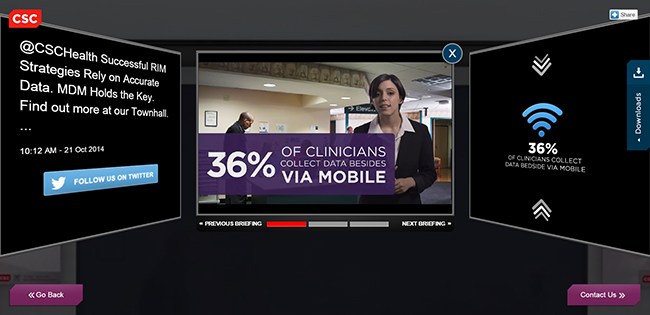
Following launch, Bluetext’s collaborative creation with CSC’s Digital Marketing team became the top performing component of the csc.com global web presence, a huge feat for a Fortune 500 corporation.
Version 2.0 features new capabilities spanning:
- Multi-floor scalability
- Triple screen experience
- Dynamic social media integration
- Triggered infographic visualizations synched with briefing videos
- Chaptered video interactivity
The following video of CSC’s head of global brand and digital marketing talks about this project:
Contact us to learn about how we create innovate digital experiences for brands like yours.
Today I was honored to be asked to speak to the University of Maryland’s Smith School of Business MBA class about creative and digital marketing. The students were senior execs spanning many Fortune 500 companies across a variety of industries. The interactive dialogue was great. Jeb Brown, the MBA professor, issued three mandates for my presentation:
1 – Describe what makes a bad client
2 – Describe how to get the most out of your agency
3 – Describe the way you solve clients problems
#1 I wanted to start out with some humor. The following “client sayings” are great signals for what makes a bad client.
#2 When asked to talk about how to get the most out of your agency, I focused on this simple list…
• Be thoughtful
• Be patient
• Be open
• Be kind
• Be consistent
• Be appreciative
• Be budget-realistic
• Be schedule-realistic
• Be generous with your time
#3 When asked to describe the way Bluetext solves Marketing, Branding, and Communications challenges, I decided to use client case studies and present our methodology through the lens of each client’s custom solution. Please click the following links to learn about those stories.
1 – Google
2 – Adobe
3 – FireEye
It was a real honor to talk to so many great marketing, branding and communication executives from so many industries. The conversation was lively, with humor at times but also serious when talking about the importance of Return On Investment in the ever-changing marketing and digital world we live in. To learn more about this presentation and Bluetext please contact me.
Who doesn’t like inbound leads? The fruit of your content marketing labor is finally coming to bear. You sit back and the emails and calls are flying in. It is the ultimate feeling for a marketer across any industry.
Before you run to the bank, however, it is smart to ask if your website and diready to handle the leads? At Bluetext, we believe that focusing on your net is often as important as your bait.
Websites need to be structured a specific way to effectively handle inbound leads. Inbound marketing is a science and that science needs to be applied to your entire website and landing page eco-system.
Here are 10 ways to critique your site:
1. This is not your Father’s responsive website…
Does your website have iWatch and other wearables in the responsive requirements as your site evolves? The form factor requirements are changing so fast that you must make sure your site is built in a responsive manner to be able to scale.
2. Is your net sticky?
Have you looked at your retention analytics lately? How are people navigating your site? Have you buried the most impactful content elements?
3. ABC – Always be closing?
It is all about clear and easy conversion throughout the entire site. Unless prompted, most visitors will browse and then run for the hills. Make sure that the entire site, including the homepage and all interior pages, are optimized for lead capture and conversion? Does every blog post end with an “ask”? Are you asking visitors to download something premium and relevant? Are you suggesting that they follow the author or the company brand? You have to be very aggressive and show a full commitment to this opt-in.
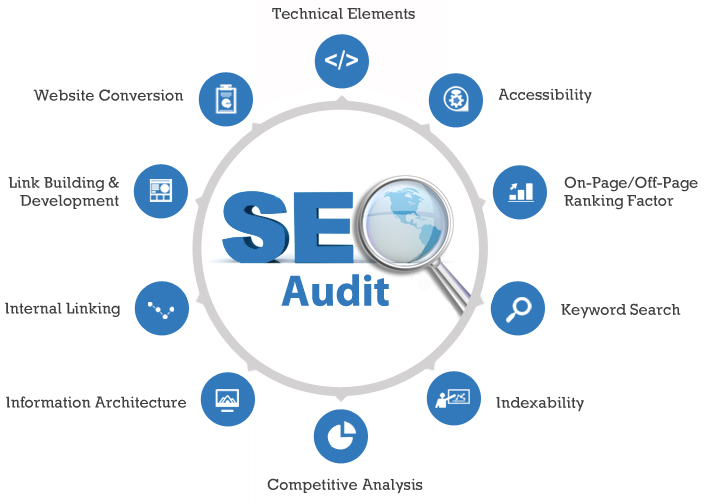
4. Have you done an SEO audit of your website in the last year?
Remember, algorithms change. Rules change. Bing continues its growth. YouTube is more important than ever as the #3 search engine. Make sure to continuously review your keywords to capture both short and long tail opportunities.
5. What are you doing to differentiate your user experiences to drive engagement with your brand online?
Are you presenting content in new and unique ways? We have done some recent work with CSC (www.csc.com/dbc) and McAfee (www.bluetext.com/futureagency.com) to help them create virtual briefing centers to get their content out virtually to create very powerful experiences.

6. Do you have a comprehensive landing page ecosystem to address all of your organizational KPIs?
Make sure to think through all of your metrics and have a clear, concise offer to address all of them.
7. Are you updating your programmatic digital advertising buys with retargeting and other social media buying as they are evolving?
CRM and adtech are getting more close than ever. It is important to ensure that they are in synch to make sure your campaigns work as hard as they can.
8. Hide the Keywords
Get the keywords out of your meta header. Google doesn’t value them and you are sharing your seo strategy with your competitors.

9. Reverse the IP and Get Smart About Your Traffic
Many off the shelf tools can help you understand your traffic with reverse IP matching technology to let you know which businesses are reviewing your site. This is great information to share with the sales team.

10. Commit to video and interactive content
The world is changing. Think about how people are consuming data. Make sure that you are modernizing your content and delivering it in new and unique ways.
Today’s digital landscape and the unification of social, mobile, and the web into a cross-channel experience are fundamentally changing the ways our portfolio of brands engages with its customers. This new paradigm has led to an evolution of user experience (UX) into Customer Experience (CX), influencing how we approach creating digital experiences that drive business impact for our clients.
One of the implications of CX is the increased role of content management systems (CMS) in delivering and managing customer experiences across channels. In the not-too-recent past, companies implemented CMS platforms to help them manage and maintain website content, generating operational efficiencies and gaining greater control over their web properties. The new focus on CX requires that CMS must become an enabler in helping clients go to market differently and transform the way they deliver products and services.
Here are three examples of the new demands CX is placing on content management technologies:
Marketing Automation
The most effective demand generation processes are those where marketers respond individually to each prospect in the buying process. But given the volume of marketing campaigns, that’s not practical. Marketing automation gives companies the ability to manage their interactions with customers and deliver the right messages at the right times over the right channels.
Marketing automation software like Eloqua and Marketo are established solutions with proven performance. However, best-of-breed CMS need to go beyond simply enabling easy integration with current marketing automation applications and build automated targeting, testing, and analytics tools right into the content workflow.
Personalization
Digital personalization serves users content and even unique experiences based on their profile and behaviors. Delivering a more relevant, or personalized, experience results in higher user engagement and enables a website to more effectively drive key business outcomes.
Personalization takes one of two forms, explicit and implicit. Explicit personalization is straightforward. Data is gathered when the user performs an action, such as filling out a form. Content can then be customized based on what the data tells us about the user.
Implicit personalization employs passive tools like cookies to gather data about users from behavior such as page views, searches, and location.
Retailers like Amazon employ complex and extremely granular personalization that requires a significant investment in resources. However, best-of-breed CMS technologies will need to enable a personalized experience to be created with very basic user information. This means that organizations can implement a personalization strategy without the massive investment.
Multi-site
Many marketing organizations today face the need to deliver an increasing number of stand-alone and unique digital experiences for marketing campaigns, product launches, or new brands. Whether it’s a landing page, microsite, or more complex website, they frequently have new content, a unique look-and-feel, and an accelerat ed time-to-market.
CMS platforms will need to make the process of delivering large numbers of unique web experiences repeatable and scalable, taking days instead of weeks and months. Marketers are able to maintain high brand consistency while more effectively react to market opportunities.
When reviewing the current CMS landscape, products like Adobe CQ and Sitecore clearly stand out from the pack in terms of CX enablement. Another entry worth noting is Drupal.
Beginning as a flexible open-source platform for on-line communities, Drupal has evolved into a truly enterprise CMS platform, capable of delivering content-driven brand engagement and sales enablement. As a pure CMS, Drupal is powerful, yet user-friendly, with a streamlined development, admin, and publishing processes that helps accelerate a site’s time-to-market.
In the past, custom modules and expert code development could enable Drupal to deliver a degree of marketing automation, personalization, and multi-site capabilities. Acquia, the commercial open source software company that provides products and technical support for Drupal, then introduced two products that brought Drupal to the next level.
Acquia Lift –an interoperable platform that delivers testing, targeting, and analytics capabilities to simplify the delivery of personalized digital experiences. By mining and interpreting data, it automates contextual relevance to create a one-on-one conversation with users.
Acquia Site Factory –a turnkey solution that reduces the complexity of and time necessary to deploy one site or hundreds of sites. Intended for non-technical users, Site Factory allows for customized design and content, without the need for back-end Drupal development.
For companies currently on Drupal or who prefer open-source technologies, Drupal is a powerful and viable solution for customer experience management.
Decisions around digital technologies come with an investment and companies have to weigh a number of factors such as existing infrastructure, total cost of ownership, and business requirements. The emergence of CX means that ROI and revenue performance management are now starting to become part of the decision-making process. Whether you’re considering replacing your current CMS or upgrading your current system, be sure to make customer experience enablement a “must have” and a high priority requirement.
